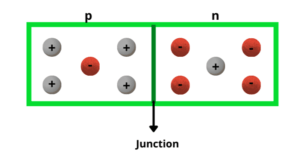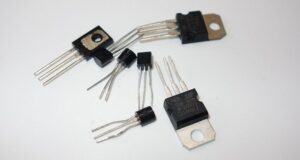What is solar cell and How It Works?

Answer :- A solar cell is basically a p-n junction which generates electrical energy or EMF (electromotive force) when solar radiation falls on the p-n junction.
- It works on the same principle (photoelectric effect) as the photodiode, except that no external bias is applied.
- A p-si wafer of about 300 micron metres is taken over which are thin layer (about 0.3 micron metres) of n-si is grown on one side by diffusion process. On the top of n-si layer, metal finger electrode is deposited. This act as a from contact.
- The metallic grid occupies only a very small fraction of the cell area (< 15%) so that light can be incident on the cell from the top.
- The generation of EMF by a solar cell, when light falls on. It is due to the three basic Processes – generation, separation and collection.
- Generation of e-h pairs due to light close to the junction, separation of electrons and holes due to electric field of the depletion region, the electrons reaching the n-side are collected by the front contact and holes reaching p-side are collected by the back contact.
Thus p-side becomes positive and n-side becomes negative giving rise to photovoltage.
- When an external load is connected to the cell, then a photocurrent flows through the load.

- The I – V characteristics of solar cell is drawn in the fourth quadrant of the co-ordinate axes.
- Semiconductors with band gap close to 1.5 V are ideal materials for cell fabrication.
- solar cells are made with semiconductors like silicon, GaAs, CdTe, CuInSe₂ etc.
- The EMF produced by monochromatic light is proportional to the intensity of light falling on the cell.




